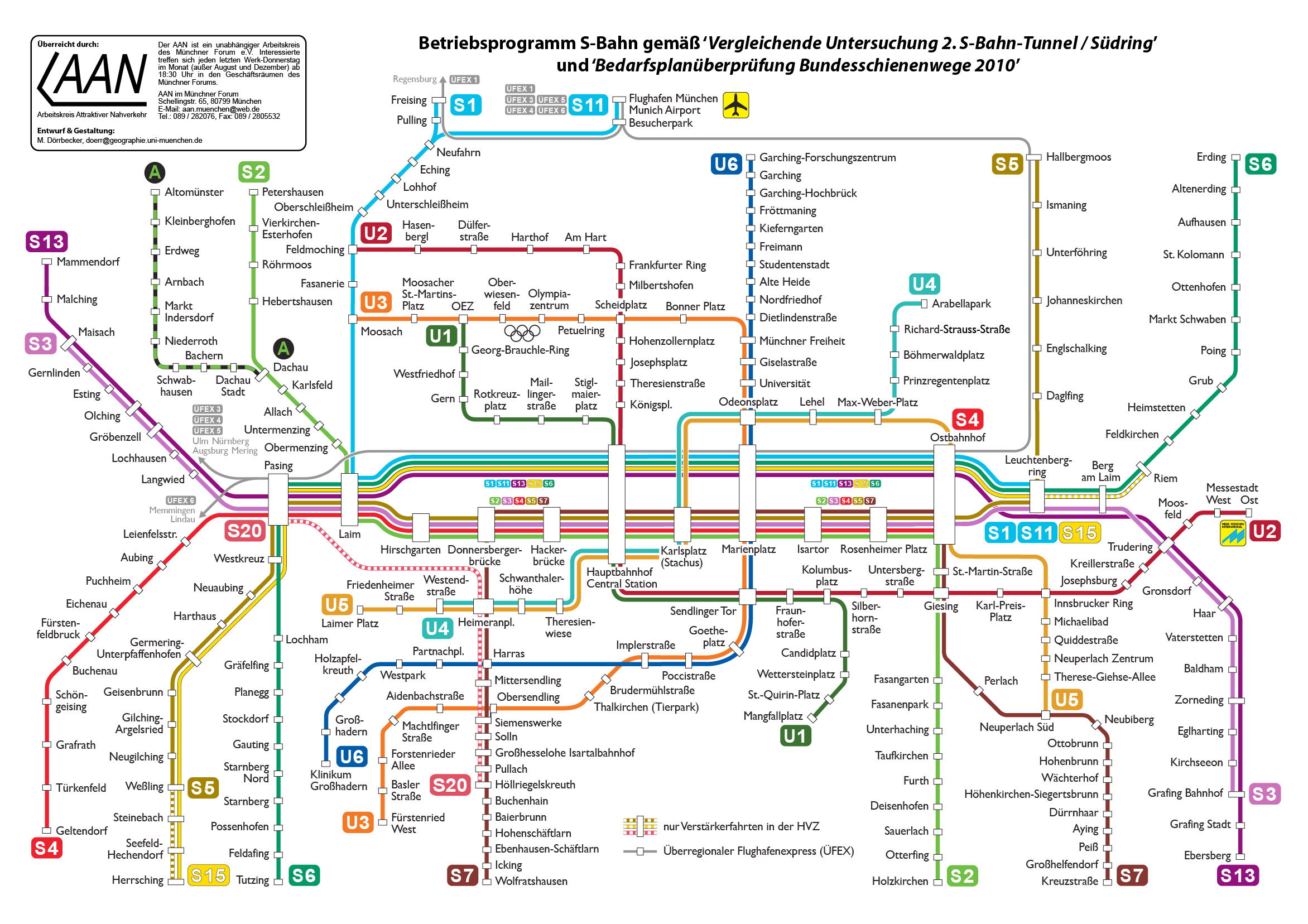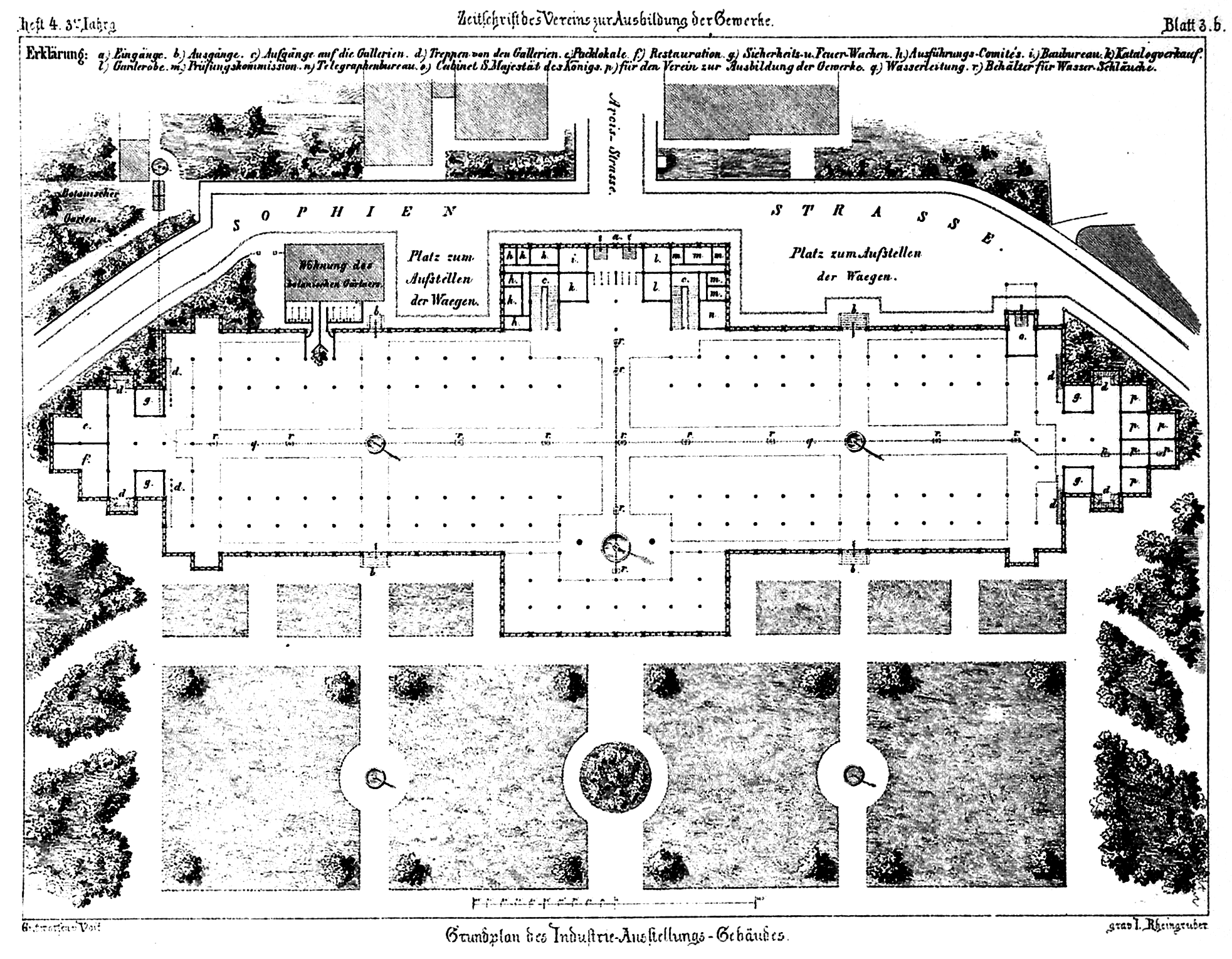|
Orleansplatz
The semi-circular Orleansplatz is located in the Munich district of Haidhausen (Munich), Haidhausen opposite the ''Munich East station, Ostbahnhof'', where the Munich S-Bahn, S-Bahn, Munich U-Bahn#U5, U-Bahn line 5 and various bus lines stop. There is also a stop for Trams in Munich, tram line 19 on Orleansplatz. The front of Orleansplatz is marked by an elongated fountain which runs parallel to Orleansstraße. The square is lined with trees and benches. This is a place for regular festivals and markets - such as the original ''Fischmarkt Hamburg-Altona, Hamburger Fisch Markt''. Several Social Service Offices are located at Orleansplatz 11 and immediately next to the square is a Registration Office of the district administration department (Orleansstraße 50). In addition, food markets, a department store, fast food restaurants etc. are located around Orleansplatz. Starting from Orleansplatz, three streets like open up like "rays" into the so-called French Quarter, which owes its ... [...More Info...] [...Related Items...] OR: [Wikipedia] [Google] [Baidu] |
Munich East Station
Munich East station (, also called ''München Ostbahnhof'' in regional services) is a major railway station in Munich, the capital of Bavaria, Germany. The station opened in 1871 as Haidhausen station on the Munich–Mühldorf and Munich–Rosenheim railway lines. DB Station&Service, a subsidiary of Deutsche Bahn AG, operates the station. It is classified as a Category 1 station, one of 21 in Germany and one of two in Munich (the other is München Hauptbahnhof). Munich East is the city's third interregional station, along with München Hauptbahnhof in the city centre and München-Pasing in the west. History The first station, built according to plans designed by Friedrich Bürklein, was inaugurated on 1 May 1871 as part of the newly built railway line to Neuötting via Mühldorf am Inn. The line to Rosenheim opened on 15 October 1871. It was initially named ''Haidhausen'' after the eponymous quarter, but it received its present name ''München Ost'' on 15 October 1876. Th ... [...More Info...] [...Related Items...] OR: [Wikipedia] [Google] [Baidu] |
Munich S-Bahn
The Munich S-Bahn () is an Railway electrification system, electric rail transit system in Munich, Germany. "S-Bahn" is the German abbreviation for ''Stadtschnellbahn'' (literally, "urban rapid rail"), and the Munich S-Bahn exhibits characteristics of both rapid transit and commuter rail systems. The Munich S-Bahn network is operated by S-Bahn München, a subsidiary of DB Regio Bayern, which is itself a subsidiary of the German national railway company, Deutsche Bahn. It is integrated into the Munich Transport and Tariff Association (''Münchner Verkehrs- und Tarifverbund'', MVV) and interconnected throughout the city with the locally owned Munich U-Bahn. Today, the S-Bahn covers most of the populated area of the Munich metropolitan area of about 3 million inhabitants. In terms of system length, the Munich S-Bahn is the fourth-largest in Germany, behind the Rhine-Neckar S-Bahn, Rhine-Ruhr S-Bahn and the S-Bahn Mitteldeutschland. The Munich S-Bahn was established on 28 May 1972. ... [...More Info...] [...Related Items...] OR: [Wikipedia] [Google] [Baidu] |
Haidhausen (Munich)
Haidhausen (Central Bavarian: ''Haidhausn'') is a quarter in Munich, Germany. It is now part of the Stadtbezirk, borough of Au-Haidhausen. Location Haidhausen is bordered to the north by Bogenhausen, Berg am Laim to the east, to the south by Au (Munich), Au, and the west border of the district is delimited by the Isar, Isar river. The boundary of the zone runs north along the Prinzregentenstraße (Munich), Prinzregentenstraße avenue then west of the square Vogelweideplatz between the civic amenity site and the tram depot on the railway track which forms the eastern border, where the entire track is still part of Haidhausen. In the south the Rosenheimer, Hoch, Rabl and Balanstraße streets form the border with Au. To the west there are the right banks of the Isar river. History Haidhausen was first mentioned in the year 808 under the name of ''haidhusir'' described in the documents as a settlement of small houses and a church. From Munich you can reach it via the "gaachen S ... [...More Info...] [...Related Items...] OR: [Wikipedia] [Google] [Baidu] |
Weißenburger Platz
Weißenburger Platz is a square in Munich's ''Franzosenviertel'' (French Quarters) in the Haidhausen district. In the middle of the concentrically arranged square is the ''Glaspalast-Brunnen'' (glass palace fountain), designed by August von Voit in 1853. This was initially located in the '' Glaspalast'' in the '' Alter Botanischer Garten'' - hence the name. At the end of the 19th century the fountain was moved to Orleansplatz. When the Ostbahnhof (East Train Station) there was rebuilt, the ''Glaspalast-Brunnen'' had to make room and was moved to the nearby Weißenburger Platz. After dusk the fountains water feature is illuminated. Around the ''Glaspalast-Brunnen'' there are flowerbeds, which are planted several times a year. This circular green space is framed by a row of trees, under which benches are placed, and a ring-shaped street, which is partly a pedestrian zone. Five streets run towards Weißenburger Platz in the shape of a star: Metzstraße and Weißenburger Straße o ... [...More Info...] [...Related Items...] OR: [Wikipedia] [Google] [Baidu] |
Loiret
Loiret (; ) is a department in the Centre-Val de Loire region of north-central France. It takes its name from the river Loiret, which is contained wholly within the department. In 2019, Loiret had a population of 680,434.Populations légales 2019: 45 Loiret INSEE Its is , which is about southwest of Paris. As well as being the regional prefecture, it is a historic city on the banks of the Loire. It has a large central area with many historic buildings and mansions. [...More Info...] [...Related Items...] OR: [Wikipedia] [Google] [Baidu] |
Squares In Munich
In geometry, a square is a regular quadrilateral. It has four straight sides of equal length and four equal angles. Squares are special cases of rectangles, which have four equal angles, and of rhombuses, which have four equal sides. As with all rectangles, a square's angles are right angles (90 degrees, or /2 radians), making adjacent sides perpendicular. The area of a square is the side length multiplied by itself, and so in algebra, multiplying a number by itself is called square (algebra), squaring. Equal squares can tile the plane edge-to-edge in the square tiling. Square tilings are ubiquitous in tiled floors and walls, graph paper, image pixels, and game boards. Square shapes are also often seen in building floor plans, origami paper, food servings, in graphic design and heraldry, and in instant photos and fine art. The formula for the area of a square forms the basis of the calculation of area and motivates the search for methods for squaring the circle by compass and ... [...More Info...] [...Related Items...] OR: [Wikipedia] [Google] [Baidu] |
Glaspalast (Munich)
The ''Glaspalast'' (Glass Palace) was a glass and iron exhibition building located in the Alter Botanischer Garten (Munich), Old botanical garden in Munich modeled after the Crystal Palace in London. The Glaspalast opened for the first General German Industrial Exhibition on 15 July 1854. Planning Following other examples around Europe, the ''Glaspalast'' was ordered by Maximilian II of Bavaria, Maximilian II, King of Bavaria, in order to hold the ''Erste Allgemeine Deutsche Industrieausstellung'' (First General German Industrial Exhibition) on 15 July 1854. Originally it was planned to erect the building on . However, the relevant Commission decision preferred an area near the railway station. Designed by architect August von Voit and built by MAN SE, MAN AG, the building was built in 1854 to the north of the Old Botanical Garden close to the Stachus. Construction Following the completion of 1853 and the planned and conservatory of Munich Residence, a glass with cast iron d ... [...More Info...] [...Related Items...] OR: [Wikipedia] [Google] [Baidu] |
August Von Voit
Richard Jakob August von Voit (17 February 1801 – 12 December 1870) was a German architect specializing in glass and iron structures. Notable projects Voit designed the city hall of Annweiler am Trifels (Rhineland-Palatinate) and the in Rhineland-Palatinate. He also designed two synagogues, one in Kirchheimbolanden in 1834, and another in Speyer in 1837. Von Voit also created the neo-Romanesque facade on Parish Church of St. Anna (Lehel, Munich), St. Anna's, Lehel, which was destroyed during the war. 1846–1853 – Neue Pinakothek The Neue Pinakothek Art Museum was commissioned by Ludwig I of Bavaria and designed by Von Voit and Friedrich von Gärtner. The design of the structure was calculated to reinforce the similarity between the older and newer museums. As part of the design, Von Voit commissioned Wilhelm von Kaulbach to show the achievements of German art in mural form. The building as originally designed was demolished in 1950 and rebuilt in 1967. 1853–1854 – G ... [...More Info...] [...Related Items...] OR: [Wikipedia] [Google] [Baidu] |
Germany
Germany, officially the Federal Republic of Germany, is a country in Central Europe. It lies between the Baltic Sea and the North Sea to the north and the Alps to the south. Its sixteen States of Germany, constituent states have a total population of over 84 million in an area of , making it the most populous member state of the European Union. It borders Denmark to the north, Poland and the Czech Republic to the east, Austria and Switzerland to the south, and France, Luxembourg, Belgium, and the Netherlands to the west. The Capital of Germany, nation's capital and List of cities in Germany by population, most populous city is Berlin and its main financial centre is Frankfurt; the largest urban area is the Ruhr. Settlement in the territory of modern Germany began in the Lower Paleolithic, with various tribes inhabiting it from the Neolithic onward, chiefly the Celts. Various Germanic peoples, Germanic tribes have inhabited the northern parts of modern Germany since classical ... [...More Info...] [...Related Items...] OR: [Wikipedia] [Google] [Baidu] |
Second Battle Of Orléans (1870)
The Second Battle of Orléans was fought during the Franco-Prussian War of 1870. It took place on December 3 and 4, 1870 and was part of the Loire Campaign. The Germans recaptured Orléans, which had been retaken by the French on November 11, 1870 after the Battle of Coulmiers, and divided the French Army of the Loire in two. Future king of Serbia, Peter, took part in the battle on the French side. The French lost 20,000 men in two days of combat, including 18,000 captured or missing, as well as 74 guns and four gunboats. German manpower losses amounted to 2,000, of which 400 killed and 1,600 wounded. The Germans lost 368 horse The horse (''Equus ferus caballus'') is a domesticated, one-toed, hoofed mammal. It belongs to the taxonomic family Equidae and is one of two extant subspecies of ''Equus ferus''. The horse has evolved over the past 45 to 55 mi ...s, including 175 killed, 183 wounded and 10 missing. Citations References * von Moltke, Helm ... [...More Info...] [...Related Items...] OR: [Wikipedia] [Google] [Baidu] |
Franco-Prussian War
The Franco-Prussian War or Franco-German War, often referred to in France as the War of 1870, was a conflict between the Second French Empire and the North German Confederation led by the Kingdom of Prussia. Lasting from 19 July 1870 to 28 January 1871, the conflict was caused primarily by France's determination to reassert its dominant position in continental Europe, which appeared in question following the decisive Austro-Prussian War, Prussian victory over Austria in 1866. According to some historians, Prussian chancellor Otto von Bismarck deliberately provoked the French into declaring war on Prussia in order to induce four independent southern German states—Grand Duchy of Baden, Baden, Kingdom of Württemberg, Württemberg, Kingdom of Bavaria, Bavaria and Grand Duchy of Hesse, Hesse-Darmstadt—to join the North German Confederation. Other historians contend that Bismarck exploited the circumstances as they unfolded. All agree that Bismarck recognized the potential for new ... [...More Info...] [...Related Items...] OR: [Wikipedia] [Google] [Baidu] |



